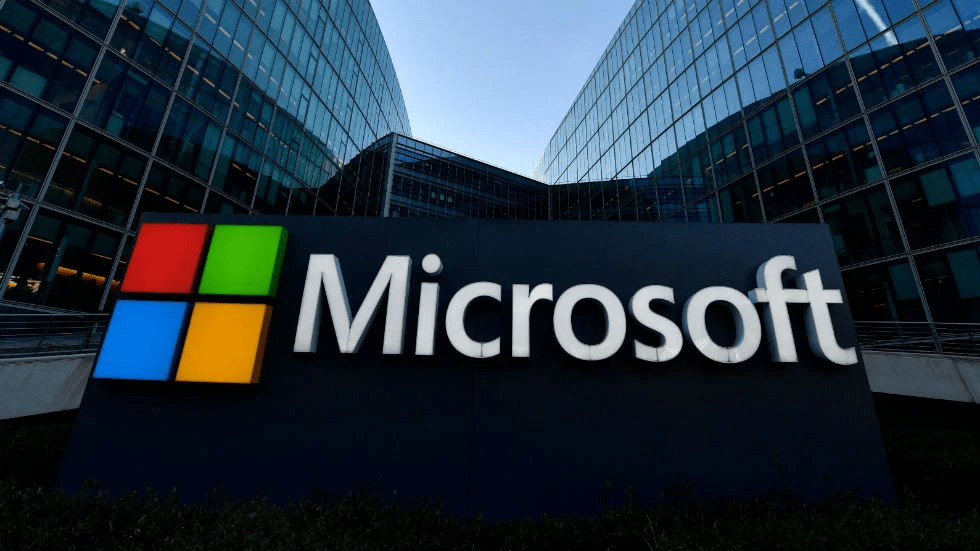Tech
Apple HomePod (2nd gen) review: A smarter smart speaker
When Apple debuted the HomePod in 2018, it was already late to the smart speaker game. Sure, the company has never been worried about tardiness, choosing instead to focus on being the best. Unfortunately, that wasn’t the case with its first attempt. The HomePod sounded good, but lacked a lot of the basic functionality and voice assistant smarts the likes of Amazon and Google offered. Apple has spent the last five years improving both HomePod and HomePod mini, adding features like multi-room audio, multi-user support and an intercom tool.
In 2021, Apple discontinued the original model in favor of the $99 HomePod mini. But now, the larger version is back with a familiar look, but lots of changes on the inside. Like the first, the new HomePod ($299) is best suited for those who’ve committed to Apple’s ecosystem. So if that’s not you, I understand if you don’t want to go any further. If it is, just know that the company has given its speaker a lot more tools than it had at launch five years ago, including more capable assistance from Siri and more smart home abilities. Plus, the second-generation HomePod is $50 cheaper than the original was at launch.
A familiar design updated on the inside
If you were hoping for a wholesale redesign with the new HomePod, Apple undoubtedly disappointed you. However, there are some noticeable changes upon close inspection. First, the speaker’s touch panel is now slightly recessed like the HomePod mini. On the original version, that panel sits flush with the top rim. When you trigger Siri, lighting for that panel now goes all the way to the edge too. Next, the power cord is now detachable. This means if you have an issue with that very necessary component, it should be easier to get a replacement (via Apple Care). If you have excellent vision, you might also be able to discern the 2023 model is 0.2-inches shorter at 6.6-inches tall (vs. 6.8 inches) if they’re sitting side by side.
On the inside though, Apple made a host of changes. Both versions have an upward facing woofer with a group of tweeters around the bottom. For the second-generation, Apple reduced the number of tweeters from seven to five, angling them slightly upward where previously they were almost perfectly side-firing. The company also cut the number of voice microphones from six down to four. And perhaps the most important change internally, Apple swapped the iPhone 6’s A8 chip for the much more modern S7 – the silicon that powers the Apple Watch series 7.
Software and setup
Despite the lack of changes on the outside, the second-gen HomePod is a better speaker because Apple has been improving it and the HomePod mini over time. The company added stereo pairing and multi-room audio alongside AirPlay 2 a few months after launch of the first generation model. Multi-user support and audio handoffs were added in 2019 and the intercom feature arrived ahead of the HomePod mini in 2020. And in 2021, HomePod gained the ability to play any TV audio via an Apple TV 4K over eARC and both spatial audio and Apple Music lossless streaming. So many of the key features Apple is chatting up on the new HomePod are things it has been slowly adding since 2018. And many of which, I’d argue, should’ve been there from there from the start.
Everything you need to set up and control the HomePod is found in Apple’s Home app. First, you’ll need to add a new speaker like you would any other smart home device with this software, including assigning it a room or location in your home. The app allows you to set up Automations and Scenes along with configuring how you’d like to interact with Siri.
You have the ability to disable voice cues or the long press on the HomePod’s touch panel in order to activate the assistant (both are enabled by default). You can also have the speaker light up and play a sound when using Siri – or do one or neither. The Home app will let you use Siri for Personal Requests too, where the speaker can recognize your voice for things like messages, calls and reminders so long as your iPhone is close by. The software allows you to disable the HomePod’s intercom feature as well, should you prefer not to use that tool.
Like the first HomePod, the 2023 model is equipped with room calibration. This detects reflections off of walls and other surfaces to configure the sound for the best performance. The HomePod does this the first time you play music, but it isn’t constant monitoring. Instead, like it did on the previous generation, the setup leverages an accelerometer to determine when it has been moved. If it has, the speaker will then reinitiate the room sensing process when music is played.
A smart home with Siri
When we reviewed the original HomePod in 2018, one of our biggest gripes was with Siri’s limited abilities. Sure the speaker sounded good, but the lack of polish with the voice assistant made it seem like a work in progress. Apple has done a lot to improve Siri over the last five years, so a lot of those issues with the original have been fixed.
First, the HomePod, like Siri on your iPhone, is capable of recognizing multiple users. Personal Requests can allow it to peek at your Calendar, Notes, Reminders, Messages, Find My and more when you ask. Plus, HomePod can give each member of your family (up to six people) their unique responses from certain iPhone apps. What’s more, Siri can create recurring home automations without you having to pick up your phone and swipe over to the appropriate app.
Even with fewer microphones to pick up your voice, the new HomePod doesn’t suffer any performance setbacks. It’s just as capable as ever at picking out your voice even in a noisy room. And, while playing music with voice commands used to be limited to Apple Music, services like Pandora, Deezer and several others can now be controlled via Siri.
1 / 12
HomePod is also a smart home hub, easily pairing with HomeKit and Matter accessories. The new model is equipped with temperature and humidity sensing, and that info is displayed prominently in the Home app. Of course, you can use that data to create automations with other smart home devices. I don’t have a compatible smart thermostat, but I was able to successfully trigger a smart plug once the HomePod detected a certain temperature in my living room.
Sound Recognition is arguably the most notable new feature that Apple is debuting with the new HomePod, but it’s not ready yet. It can listen for smoke or carbon monoxide alarms and send a notification to an iPhone, iPad or Apple Watch. What’s more, you’ll be able to “check in” on what’s happening via an audio feed or camera. Sound Recognition won’t arrive until later this spring, so we’ll have to wait to test it.
Sound quality
Audio quality wasn’t an issue with the first-gen HomePod and it’s still great here. But like the first version, Apple’s choice for tuning won’t appease everyone. There’s a continued emphasis on voice, so things like vocals in music or dialog on a TV show or movie take center stage. At times it’s fine though, with some genres and content, it leads to a rather subpar experience.
Don’t get me wrong, for the most part HomePod sounds outstanding, especially when you put it up against other smart speakers. The fact is many of those don’t sound very good at all, so Apple continues its track record for making a device that has serious audio chops and smart features. RTJ4 has ample bass for its bombastic hip-hop beats while Sylvan Esso’s No Rules Sandy gets enough low-end for its synth-heavy rhythms. Thanks to the HomePod’s excellent clarity, detailed styles like bluegrass and jazz shine. Sometimes the bass is a little too subdued for metal (Underoath’s Voyuerist) or full-band country (Zach Bryan’s 2022 live album), and the vocals too forward, but overall, it sets the standard for smart speaker sound. And the HomePod only shines brighter as a stereo pair.
When you add the second HomePod in the Home app, the software asks you if you want to use them together. Once you tell it which side the additional unit is on (left or right), the app completes the setup for you, assigning the appropriate channel to each speaker. Now everywhere you previously saw a single HomePod icon, you’ll see two, constantly reminding you of the stereo arrangement. The double speaker option is great for music. On Béla Fleck’s My Bluegrass Heart, the two-speaker arrangement adds a lot of dimensionality to each track. There was already a spatial element to the tunes, but dual HomePods heightens the sensation, making it seem like you’re in the middle of the musicians while they record each song.
When you select a HomePod for use with the Apple TV you still need to deselect your TV speakers. Those aren’t disabled just because you’ve asked the streaming box to also send audio to a HomePod or two. TV audio with stereo pair is fine, but I can’t see using a single unit for the same purpose. In a multi-room setup you might want to send the sound from a live event like the Super Bowl to a solo speaker, but having just one as your lone living room audio from a TV isn’t a great experience. While the HomePod beams sound in all directions, with a single speaker it’s clear the sound is coming from a fixed location – something that’s a lot less noticeable with a pair or with a soundbar.
As is the case with vocals, dialog takes prominence with a HomePod and Apple TV. At times it can seem slightly muffled when watching things like live sports. Otherwise, there’s good clarity, nice bass and great dimensional audio when streaming Formula 1: Drive to Survive or Slow Horses. But, honestly, if you’re looking to improve your living room audio, a soundbar and sub is a better option. The driver arrangement in those speakers does a better job of filling a room completely and evenly. Plus, most companies give you the ability to use adjustments or presets to dial in how much you want those speakers to focus on dialog so you can fine-tune things to your liking.
The competition
Because the HomePod is best suited to people who have married themselves to Apple’s ecosystem, the best alternative to the second-gen HomePod is the cheaper HomePod mini. If all you’re after is some Siri assistance with your smart home and a speaker that’s good enough for casual listening and podcasts, the $99 option will work well for you. Plus, Apple just unlocked the smaller speaker’s inactive temperature and humidity sensor and it’s due to get Sound Recognition.
Wrap-up
Apple has been preparing for a new HomePod for five years, constantly improving both the original version and the HomePod mini. And the fact that the company has made Siri a more capable companion certainly helps. Plus, there’s more smart home abilities than before. Apple hasn’t strayed from its emphasis on the spoken (or sung) word for HomePod’s sound profile, but that’s okay. It’s clear that the company is focused on expanding the toolbox for its smart speakers after their debut, so I’d expect that much like the original HomePod, this is just the beginning for the second generation.

Tech
Google Unveils AI-Powered Pixel 9 Lineup Ahead of Apple’s iPhone 16 Release
Google has launched its next generation of Pixel phones, setting the stage for a head-to-head competition with Apple as both tech giants aim to integrate more advanced artificial intelligence (AI) features into their flagship devices. The unveiling took place near Google’s Mountain View headquarters, marking an early debut for the Pixel 9 lineup, which is designed to showcase the latest advancements in AI technology.
The Pixel 9 series, although a minor player in global smartphone sales, is a crucial platform for Google to demonstrate the cutting-edge capabilities of its Android operating system. With AI at the core of its strategy, Google is positioning the Pixel 9 phones as vessels for the transformative potential of AI, a trend that is expected to revolutionize the way people interact with technology.
Rick Osterloh, Google’s senior vice president overseeing the Pixel phones, emphasized the company’s commitment to AI, stating, “We are obsessed with the idea that AI can make life easier and more productive for people.” This echoes the narrative Apple is likely to push when it unveils its iPhone 16, which is also expected to feature advanced AI capabilities.
The Pixel 9 lineup will be the first to fully integrate Google’s Gemini AI technology, designed to enhance user experience through more natural, conversational interactions. The Gemini assistant, which features 10 different human-like voices, can perform a wide array of tasks, particularly if users allow access to their emails and documents.
In an on-stage demonstration, the Gemini assistant showcased its ability to generate creative ideas and even analyze images, although it did experience some hiccups when asked to identify a concert poster for singer Sabrina Carpenter.
To support these AI-driven features, Google has equipped the Pixel 9 with a special chip that enables many AI processes to be handled directly on the device. This not only improves performance but also enhances user privacy and security by reducing the need to send data to remote servers.
Google’s aggressive push into AI with the Pixel 9 comes as Apple prepares to unveil its iPhone 16, which is expected to feature its own AI advancements. However, Google’s decision to offer a one-year free subscription to its advanced Gemini Assistant, valued at $240, may pressure Apple to reconsider any plans to charge for its AI services.
The standard Pixel 9 will be priced at $800, a $100 increase from last year, while the Pixel 9 Pro will range between $1,000 and $1,100, depending on the model. Google also announced the next iteration of its foldable Pixel phone, priced at $1,800.
In addition to the new Pixel phones, Google also revealed updates to its Pixel Watch and wireless earbuds, directly challenging Apple’s dominance in the wearable tech market. These products, like the Pixel 9, are designed to integrate seamlessly with Google’s AI-driven ecosystem.
Google’s event took place against the backdrop of a significant legal challenge, with a judge recently ruling that its search engine constitutes an illegal monopoly. This ruling could lead to further court proceedings that may force Google to make significant changes to its business practices, potentially impacting its Android software or other key components of its $2 trillion empire.
Despite these legal hurdles, Google is pressing forward with its vision of an AI-powered future, using its latest devices to showcase what it believes will be the next big leap in technology. As the battle for AI supremacy heats up, consumers can expect both Google and Apple to push the boundaries of what their devices can do, making the choice between them more compelling than ever.
News
Microsoft Outage Hits Payment Processors

When major payment processing systems have problems, the issues impact many critical systems that society depends on. In this article, we’ll explain the cause of the Microsoft outage and discuss the impact computer networking issues had on Canada. We’ll also examine whether or not Microsoft was at fault and what businesses can do to prevent further outages.
What Happened With the Microsoft Outage?
The outage with Microsoft’s Azure payment processor resulted from a buggy security update from an outside company, CrowdStrike. CrowdStrike offers information technology security services for many Microsoft Windows computers. The company’s software developers sent a new update out, but instead of patching up minor issues with the existing software, the code within conflicted with Windows and prevented computers from booting up. Users expecting to start their computers for a typical day were instead faced with the dreaded “Blue Screen of Death” error message.
So, how does this produce a problem and a payment processor issue? Many computers running payment processing, among many other kinds of software used for airlines, banks, retail, and other essential services, couldn’t start and were unable to let payments through. This is a catastrophic issue for companies that are heavily reliant upon the speed and ease of an electronic transaction.
In Canada, the outage impacted critical computer systems for air travel. Flights couldn’t be paid for and booked, which caused major problems for customers unable to make transactions while flights remained grounded. Travellers stuck waiting for flights to take off made their way over to the airports’ Starbucks and other vendors, only to discover unusually long lines due to payment issues. Even online gamblers looking to take their minds off the situation couldn’t take full advantage of one of the fastest payment options out there because of the outage.
Aside from payments, hospitals for major health systems had to use paper to complete important tasks like ordering lab work and getting meals to patients. Emergency dispatch lines were temporarily unable to function correctly while their computer systems were down.
How Was the Outage Fixed?
Thankfully, CrowdStrike fixed the problem on their end quickly, mostly via an additional reboot that allowed CrowdStrike to send over unflawed code. Unfortunately, for some business and private customers, rebooting wouldn’t be enough with command-line level adjustments needed for the operating system to run correctly.
The Good and Bad of Outages
First, we’re thankful that the outage was not caused by hackers accessing and stealing a mountain of personal data. A recent outage with an automotive software provider went on for much longer and ended much worse for software provider CDK, which likely paid an undisclosed sum north of $20 million to get data back and systems restored.
By some chance, Microsoft is reported to have experienced its own outage, and many information technology professionals blame Microsoft in part for their issues because of how their systems attempted to fix the problem by rebooting over and over again, though some of Microsoft’s PCs needed to warn users to make a change manually. Unfortunately, any computer that required manual intervention took longer to recover, as a knowledgeable person had to access each computer affected by the issue. In some cases, between dealing with several hours of backlogged tasks and slow recovery processes, some businesses took days, not hours, to get back online.
The outage brings up another major point in the cybersecurity and computer industry. CrowdStrike and Microsoft are both big companies in their respective fields. As a result, the effects of bad code spread much further than they could have if there were more competitors making security products or if there were more software companies making operating systems like Windows. While only 8 million computers were believed to be affected out of a much larger global network, those are essential computers for worldwide communication and payment processing. Perhaps companies should be putting their eggs in more than one basket?
The testing methods for the outage are unclear—did CrowdStrike test the routine software update enough to detect the potential for a major outage? Apparently not.
What Should Businesses Do Next?
Software like Microsoft Azure’s payment systems come from what information technology professionals call ‘the cloud.’ The software is remotely managed over the internet, meaning that the computer that runs the system is not physically present at the location. Unfortunately, this also means that an issue with the internet can take critical systems out of service.
Businesses ranging from major airlines and banks to mom-and-pop stores would be well served by backup systems at their locations. These don’t have to be as primitive as the old-fashioned credit-card carbon-copy slide, but there are options available with consistent service that don’t repeatedly rely on the same networks.
Conclusion
There were certainly challenging moments for Canadian businesses and emergency services during the CrowdStrike and Microsoft outage. As they scrambled to understand the problem and waited, albeit briefly, for issues to resolve, many companies learned the importance of having local and reliable backup for their computer systems.
Tech
New photos reveal more details about Google’s Pixel 9 Pro Fold

Google’s secret new line of Pixel 9 phones isn’t that big of a secret anymore. Taiwan’s National Communications Commission (NCC) released new photos of the phones including the Pixel 9 Pro Fold from almost every conceivable angle.
Android Authority found the photos in the NCC archives and uploaded galleries of each of the four phones including the Pixel 9, 9 Pro, 9 Pro XL and 9 Pro Fold. They reveal some interesting details about the new Pixel phones.
The charging rates will be a little faster than the last generation of Pixel phones: Taiwanese authorities measured 24.12W for the base model, 25.20W for the Pro and 32.67W for the 9 Pro XL. The Pixel 9 Pro Fold, however, was the slowest of all of them at 20.25W. These numbers don’t often match up perfectly with the advertised ratings, so expect Google to be promoting higher numbers at its event.
Speaking of chargers, it looks like Google needed a bigger charger to power its new phones. Photos included in the NCC leak show each phone will come with a wall charger that’s around 45W depending on which model you purchase. The charger’s plug moved from the middle to the top of the brick.
The latest photo dump also shows the 9 Pro Fold unfolded for the first time. Google has moved the selfie camera to the inside screen for a wider field of view. The 9 Pro Fold also has a slimmer top and bottom, a reduced fold crease on the display and a full 180 degree unfolding angle to make a screen that’s just over 250mm or just under 10 inches.
These photos are the latest in a very long list of leaks of Google Pixel 9 photos. The last Pixel 9 leak came down yesterday showing two prototype models of the base and XL models. Google might look into buying a new combination lock for the high school locker where they apparently keep all their unreleased gear.

-

 Sports23 hours ago
Sports23 hours agoWilliam Stanback steps up in Montreal return as Lions beat Alouettes
-

 Health23 hours ago
Health23 hours agoHeal Your Dog Naturally
-

 News8 hours ago
News8 hours agoEnvironment solution: New metals refinery for nickel and cobalt opens in Ohio
-

 News8 hours ago
News8 hours ago‘Unstoppable’ captures Anthony Robles’ singular life, with Robles as his own stunt double
-

 Health24 hours ago
Health24 hours agoIron Man Stamina
-

 Sports9 hours ago
Sports9 hours agoCanadian para paddler Brianna Hennessy earns Paralympic silver medal
-

 News7 hours ago
News7 hours agoVenezuela revokes Brazil’s custody of diplomatic mission that’s housing 6 Maduro opponents
-

 News7 hours ago
News7 hours agoUS believes Iran has transferred short-range ballistic missiles to Russia



















